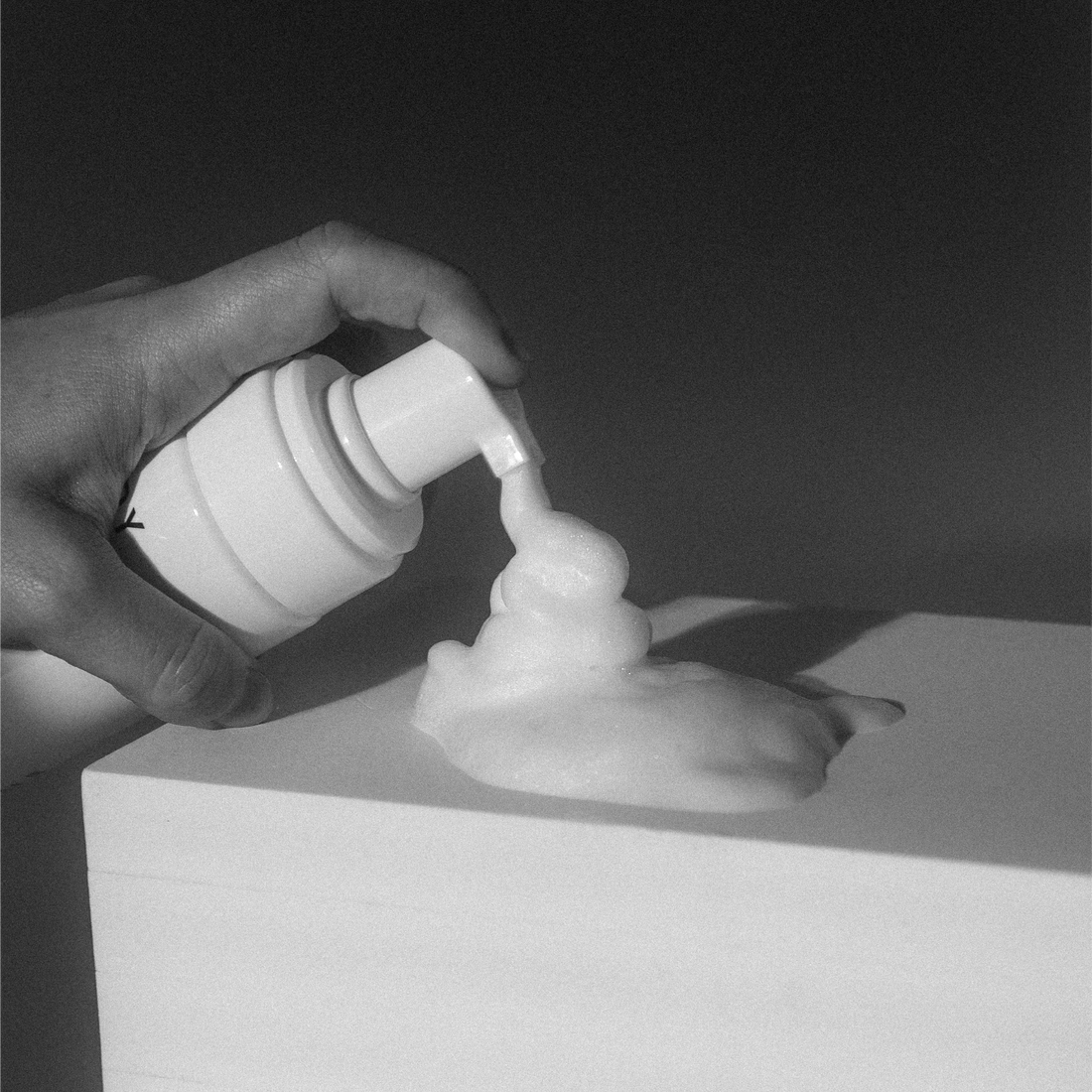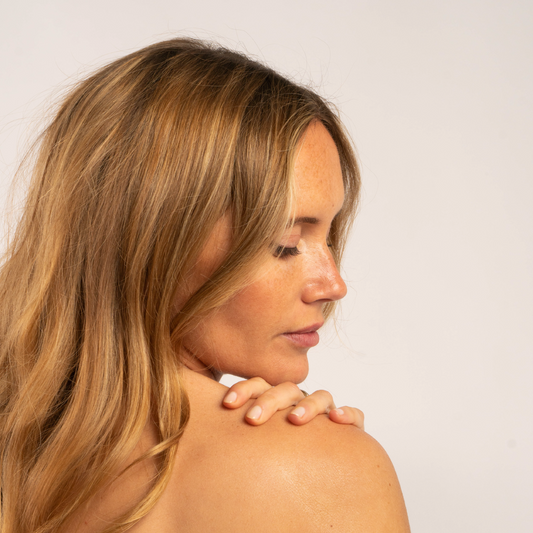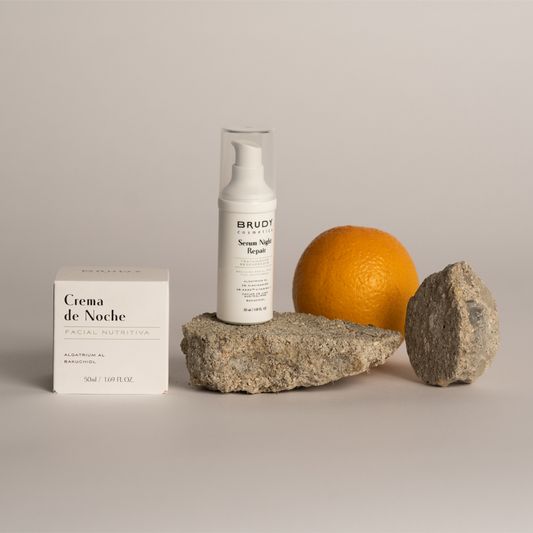
Oily and acne-prone skin: The path to acne-free skin by Brudy Cosmetics
What is the difference between Night Repair Serum and Night Cream?
Welcome to our article about acne, a skin problem that affects millions of people around the world. From adolescence to adulthood, acne can be a constant concern and difficult to treat. However, there are many options available to control and prevent its appearance. In this article, we will cover the causes of acne, the types and treatments and the existing treatments to maintain clear and blemish-free skin. Read on to find out how you can get rid of pimples once and for all! But first…
What is acne?
Acne is a skin condition that occurs when hair follicles and sebaceous glands become clogged. This can cause a variety of lesions, including pimples, cysts, pustules, and nodules. Although it is a common problem that many teenagers struggle with, it can also occur in adults. And logically, acneic skin is one that presents imperfections on the face or body when the amount of sebum changes and certain bacteria multiply abnormally.
Why does acne appear?
Some of the most common causes of acne are the excessive production of sebum by the sebaceous glands, which clogs the pores of the skin and forms blackheads. Also, sebaceous secretion is influenced by the properties of the hormones that appear during puberty or the female life cycle. Likewise, dead skin cells, makeup, dirt and other contaminants can clog pores, also causing acne to form. Lastly, it can be formed by an inherited trait, meaning it is more likely to occur in those who have a family history with this condition. While some teens clear their skin on their own, others need a lot of help to get rid of pimples. And therefore carry out treatments that help prevent and eliminate it. If left untreated, it can be very annoying and even dangerous. Acne scars can cause long-term skin damage, and antibiotics are usually not enough to clear the infection completely. Since there are so many types of acne, we're going to explain them all in this article so you know what to keep in mind when planning your next skin care routine. Read on to learn everything you need to know.
TYPES OF ACNE
Although there are many different types of acne, the most common is known as acne vulgaris. It is characterized by the appearance of blackheads, cysts, pimples and blemishes on the skin and occurs when clogged hair follicles, caused by a combination of sebum and dead skin cells, become infected with bacteria.
Acne rosacea is a type of inflammatory acne that primarily affects the face. It is characterized by redness and erythema on the skin, as well as the appearance of pimples and papules in some cases. The exact cause of rosacea is unknown, but it is believed that it may be related to factors such as heredity, age, hormones and environmental conditions (Can we provide scientific evidence of this, linking to the website that contains this information? We It would help to give credibility to the contribution and to create external links, obviously it must be a website that does not compete or compete with ours, for example WHO). Unlike acne vulgaris, this is not due to a blockage of the hair follicles and is not caused by bacteria, but is a chronic inflammatory skin disorder that can worsen over time if left untreated.
We also find acne conglobata or cystic acne, a serious and peculiar type of acne that is characterized by the formation of large, deep pimples and cysts on the skin. These inflammatory lesions can form large masses of swollen and painful tissue. It is more common in men than in women and can appear anywhere on the body, but is most common on the face, back, chest and thighs.
Another type is acne fulminans, a unique and aggressive form of acne characterized by the rapid and massive formation of inflammatory cysts and pimples on the skin. It is a severe form of acne that can cause severe pain and swelling and may require urgent medical attention.
Finally, neonatal acne is a benign and transient condition that affects some newborn babies and is characterized by the appearance of small pimples and pimples on the face, forehead and scalp of newborns. This may be caused by a hormonal response to the elevated levels of androgens produced during pregnancy or influenced by exposure to body cream, breast milk or oils from the mother's skin during breastfeeding. It disappears on its own so it does not require medical treatment.
How to eliminate acne? Best anti acne treatments?
At Brudy Cosmetics we recommend that among all the methods that exist to prevent and combat this condition, we differentiate between topical and oral treatments.
Topical treatments:
- Benzoyl peroxide: An antibacterial agent that is applied to the skin and helps reduce the number of bacteria in the hair follicles. Link to product.
- Salicylic Acid: A gentle exfoliant that helps unclog pores and reduce sebum production. Link to product.
- Retinoic acid: a derivative of vitamin A that helps reduce sebum production and accelerate cell renewal. Link to product.
Oral therapy:
- Antibiotics: Help reduce the amount of bacteria on the skin and reduce inflammation.
- Isotretinoin: A synthetic retinoid used in severe cases of acne that helps reduce sebum production and accelerate cell renewal.
It is important to keep in mind that each person is unique and the causes of acne can vary from person to person. Therefore, at Brudy Cosmetics we want to point out the importance of speaking to a dermatologist to determine the underlying cause of your acne and receive the appropriate treatment. It is necessary to follow your doctor's instructions and be patient, as some treatments may take several weeks or months to produce significant results.



